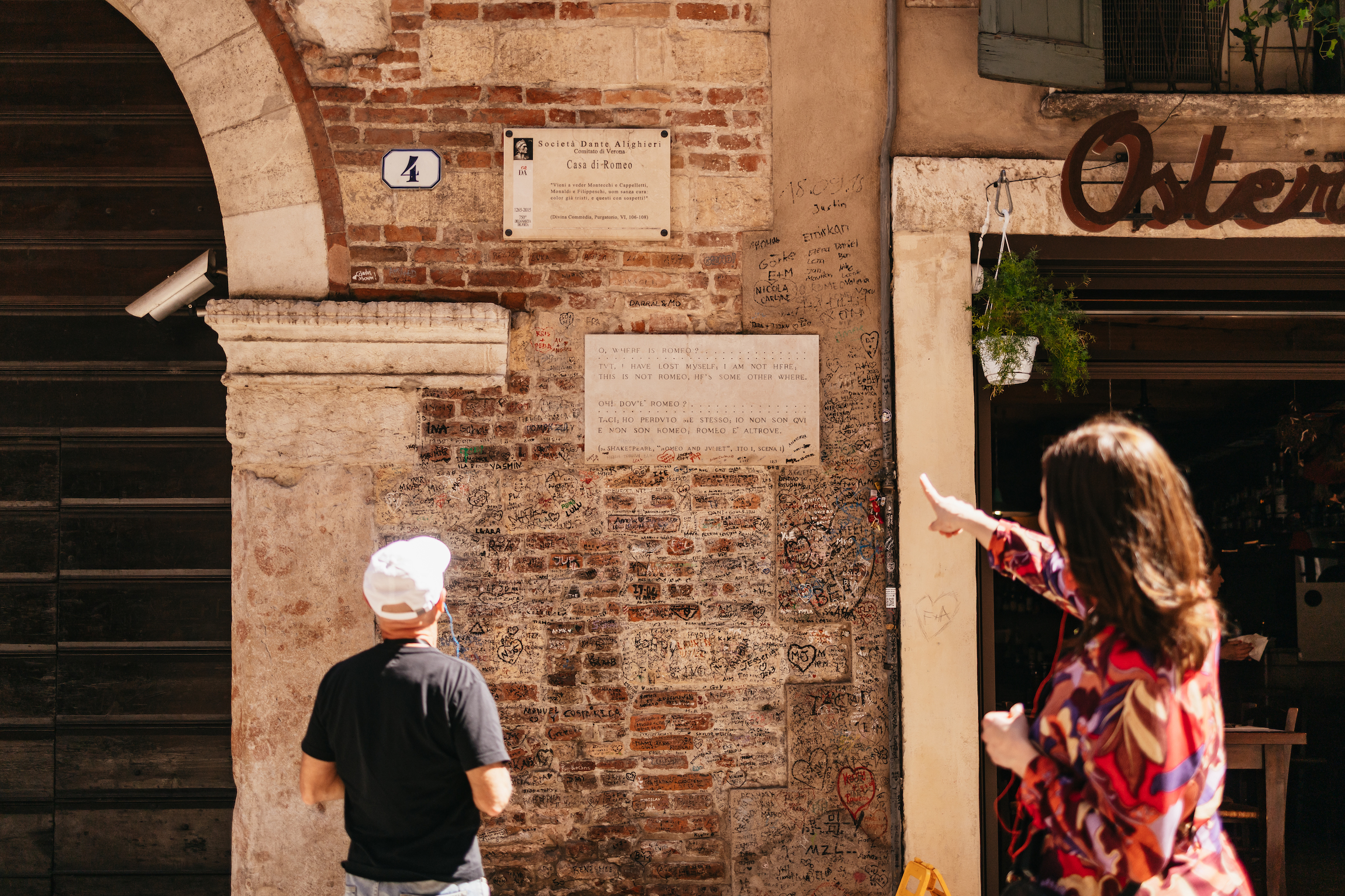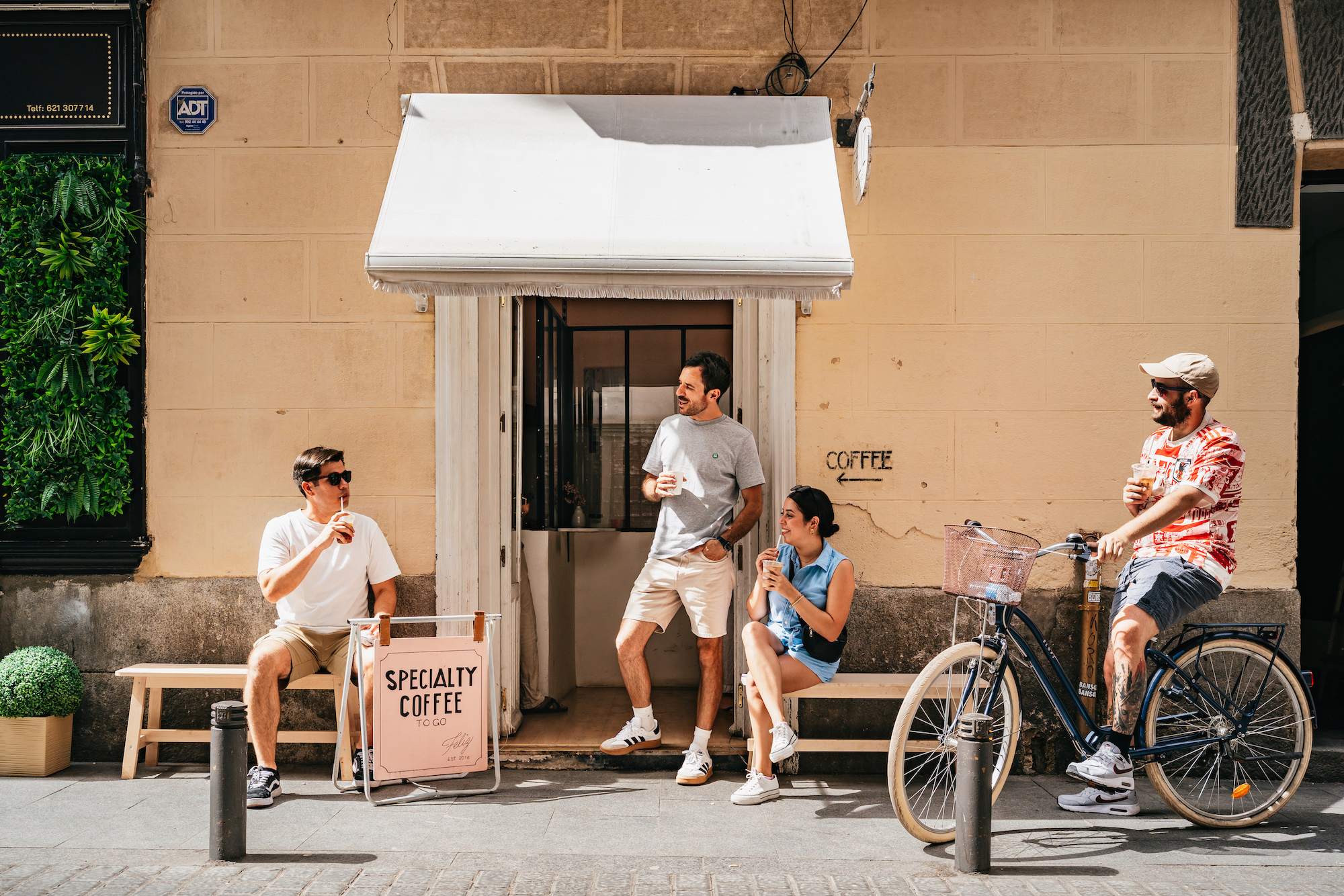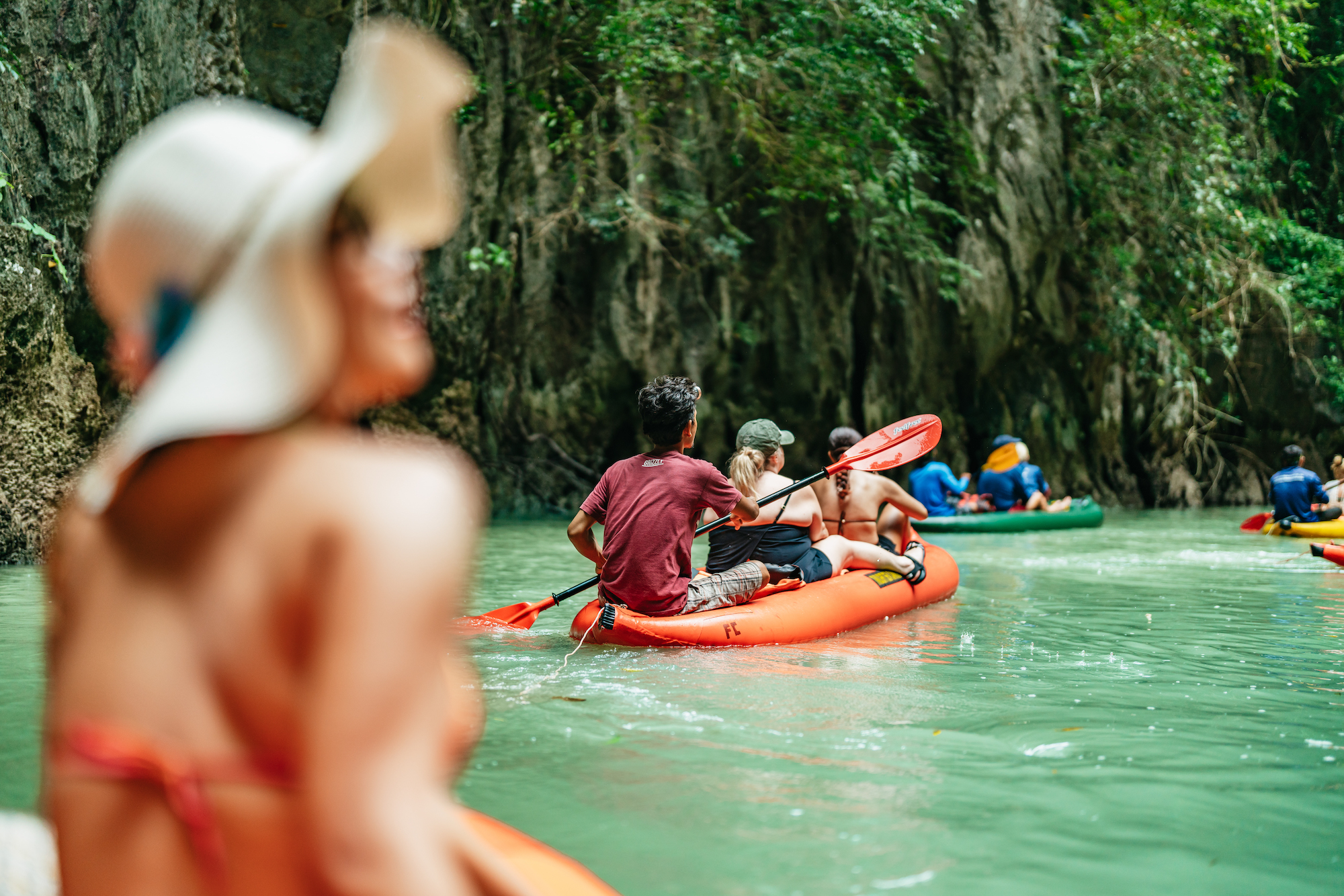Finding new tour opportunities takes more than offering an alternative to what already exists. The best results come when you discover stories nobody is sharing, find solutions to problems travelers face, or create experiences that don't exist yet.
This means looking beyond the obvious tourist spots and uncovering genuine opportunities that will appeal to travelers.
This guide offers 8 practical ways you can identify what’s missing in your local tourism scene. Learn how to collect insightful feedback, refine your tour ideas, and create experiences that keep travelers coming back and recommend you to their friends.
Understanding missing opportunities
A missing opportunity isn’t just a secret street or a hidden gallery. It’s the gap between what travelers want and what’s actually available in your area.
This could be a missing tour format (like slower-paced tours for people who hate rushing), an underserved group (families with toddlers who need stroller-friendly routes), or a unique angle nobody has brought to market yet (like tours focused on a city's street art or local coffee culture).
Missing opportunities often show up in everyday conversations. When a traveler says, "I wish I could have spent more time there," they're telling you about a gap. When locals say, "Tourists never get to see our real neighbourhood markets," that's another gap.
How Icelandia turned volcanic eruptions into business opportunities
Icelandia, a tour operator in Iceland, is a great example of how identifying gaps can turn challenges into opportunities. When the Litli-Hrútur rift zone erupted in 2021, they saw an opportunity to innovate and make the most of a special event happening in their backyard.
What started as a simple shuttle service for locals during COVID border closures evolved into a full range of volcano tours for international travelers. When eruptions hit the news, search interest spikes 10x, and Icelandia is ready to meet that demand with unique experiences.
Their success shows how spotting gaps - in this case, safe access to a natural phenomenon - can create unforgettable experiences that travelers can't find elsewhere.
Read the full story: From Lava to Lemonade: Maximizing What Your Region Has To Offer
8 ways to spot your next hit tour
Good research combines multiple approaches to build a complete picture of what’s missing in your destination. Your most valuable insights often come from simple conversations.
Here are 8 practical methods to identify these opportunities:
1. Start with your guests
Guest feedback provides the most honest insights. They’ve experienced your experience and your destination with fresh eyes and aren’t shy about sharing what worked and what didn’t.
Read entire reviews, not just the ratings and look for patterns across multiple reviews rather than focusing on one-off comments.
Comments like “I wish we had more time there” are signals of an unfilled need. A five-star review is great, but a four-star review that says, "I wish we'd had more time to explore the Roman Forum afterward" tells you exactly what's missing. That "I wish" is pointing directly at a potential gap.
Try asking guests open-ended questions after tours and record their responses:
- "What surprised you most about today?"
- "If you had more time here, what else would you do?"
Pro tip: If your activities get a lot of reviews on GetYourGuide, make sure to use the AI review summaries on your Reviews page. This smart tool looks at all your feedback and shows you what needs work and what guests love most.
When you listen to what guests say, you can make your experiences better and even spot chances for new tours. Say reviews keep mentioning guests wish they had more time at a certain location - that could be your next tour idea.
This approach has worked well for many operators. French Riviera Sightseeing created an entirely new tour after noticing a pattern in guest comments:
"We listen to our customers. Some guests expressed interest in seeing the nightlife of the places we visit, so we created the Monte Carlo by night tour. It's about creating unique experiences that showcase the French Riviera at its best."
Recommended read: How French Riviera Sightseeing is unveiling the Côte d'Azur to more visitors
2. Engage with local voices
Locals know the hidden corners of a destination best. They understand the spots that don’t make it into guidebooks and can tell you what visitors ask about.
But here’s the key: connect with people who interact with tourists daily, like hotel staff, café owners, taxi drivers, shopkeepers or community leaders, not just historians or guides. These are people who field questions from confused tourists every day.
Great conversation starters you could use:
- “What do visitors always ask about that they can't find?”
- “What do you think is overlooked but worth attention?”
- “Have you noticed any new trends or interests from visitors lately?”
- "What do you wish tourists knew about this place?"
These conversations give you real insights into unaddressed traveler needs and emerging trends that brochures and websites miss.
And some operators take this approach even further, using local enthusiasm as their litmus test for new experiences. Untapped New York has built their entire business model around this philosophy:
"If we can impress someone who's been living in the city for 30 years, we can definitely blow the mind of someone who landed that morning. But we'll never launch something that doesn't excite New Yorkers first."
Read the full interview: Hidden Gems to Global Success: Spotlight on Untapped New York
When locals are genuinely excited about what you're offering, you know you've found something special that goes beyond typical tourist attractions.
3. Listen in on traveler conversations online
The internet is full of travelers posting about their wishes, frustrations, what they look for and can’t find. Spend some time browsing forums like Reddit’s r/travel, r/solotravel, or groups for photographers, food lovers, outdoor enthusiasts, and look for destination-specific online communities.
Pay attention to repeated questions: “Is there a less crowded version of this?”, “What are rainy-day alternatives?”, Any recommendations for [specific interest] in [your destination]?”.
These posts show clear demand. If multiple people are asking about rainy-day alternatives and you only see indoor museum tours available, there’s your opportunity.
Pro tip: Hobby and cultural organizations in your area can also highlight specialized interests and gaps in visitor experiences.
4. Discover local favorites
Not all valuable spots appear in travel guides. Local blogs, news outlets, and community social media accounts often showcase the spots residents love but travelers rarely visit.
Look for:
- Neighborhood events that locals attend
- Cultural events or festivals that aren't heavily promoted to tourists
- Small museums or galleries that fly under the radar
- Markets or seasonal activities that aren’t heavily promoted
- Historic sites or viewpoints that locals consider special
For example, maybe there's a weekly farmers market where local chefs shop, but no tours include it. Or perhaps there's a rooftop garden that offers stunning views but isn't on any tourist maps. These are perfect foundations for unique experiences.
5. Use data to back up your ideas
While gut feelings are important, data can confirm whether your ideas have real potential. Use platforms like Google Trends to compare search interest between different activities in your destination.
For example, compare search terms like "Rome food tour" with "Rome baking class." If cooking classes get a lot of search traffic but few tour options exist, that's a clear opportunity.
Then, browse categories on booking platforms. See which categories are overflowing and which have few options.
6. Study traveler needs across the market
Study traveler reviews across your destination's tour offerings to spot consistent pain points or unmet expectations. Large group tours too impersonal? There’s an opening for smaller, more exclusive tours.
What to look for in particular:
- Comparisons to other destinations (“In Valencia, they had X, why not here?”)
- Timing issues ("too rushed", "not enough time at key spots")
- Group size complaints (too big, too small)
- Missing elements ("I wish we could have tried the food")
- Access problems ("Too crowded," "Couldn't get close enough")
- Weather-related issues ("Tour was canceled," "Nothing to do when it rained")
Use this research to understand what customers want, not to copy someone else's unique tour concept. Instead, look for genuine opportunities to solve problems that no one is addressing properly yet.
Pro tip: Pay special attention to 3-star reviews, which often contain the most constructive feedback rather than just praise or complaints.
Check social media hashtags related to your city (like #visitlondon) to see what people post about. If you notice many photos of a particular viewpoint or food item that isn't part of any tour, that's a signal of interest.
7. Be a traveler in your own city
One of the most powerful research methods is to experience your destination through the eyes of a traveler.
Schedule a full day to explore your city as if you've never been there before. This means joining tours or taking popular sightseeing routes, relying on tourist maps and information, and bringing a camera and notebook to document pain points and opportunities.
Are tours too rushed at certain spots? Do they skip areas that might interest specific groups? Do they all follow the same route? These are potential cues for you to explore.
For example, you might notice that on a food tour, participants repeatedly ask about local cooking techniques but never get to try them, revealing an opportunity for a hands-on cooking component.
Pro tip: Visit attractions or locations at different times. You might discover that a crowded place is quiet at 8 AM, offering a perfect opportunity for an early morning tour with exclusive access.

8. Look for seasonal opportunities
Many destinations have untapped potential during shoulder or off-seasons that could become unique opportunities. Here are some things to search for:
- Weather-specific activities: What's special about your destination in winter, spring, or fall?
- Local events and festivals: Are there celebrations that tourists don't know about?
- Natural cycles: Do flowers bloom, animals migrate, or landscapes change seasonally?
- Cultural seasons: When do locals do certain activities that visitors might enjoy?
Pro tip: Look at what similar destinations in other regions offer during comparable seasons and create a year-round calendar of local events, natural cycles and weather patterns.
Create your itinerary based on real opportunities
After gathering insights, evaluate each potential gap based on:
- Market size: How many visitors would be interested in this experience?
- Uniqueness factor: How different is this from existing offerings?
- Implementation difficulty: What resources, permissions, or skills would you need?
- Alignment with your strengths: Does this play to your existing capabilities?
- Sustainability: Can this experience be maintained long-term without negative impacts?
Before launching fully, test your idea with small groups. Run pilot tours with friends or offer discounted trials to get feedback. This helps you fix problems before going public.
Key takeaways
- Listen to what travelers actually say they want, not what you think they want
- Talk to locals who interact with tourists daily - they know the real questions
- Use online conversations and data to confirm your ideas have demand
- Experience your own destination as a tourist to spot obvious gaps
- Test new ideas small before investing heavily
Create the memories travelers truly want
As you collect information, themes will appear. You might notice a need for solo-traveler-friendly activities, a lack of experiences for travelers with mobility needs, or an opportunity for tours about architecture or local authors.
This research helps you share your passion in a new way. By listening, watching, and exploring, you can create something unique that travelers have been looking for all along.
Remember Icelandia's example: sometimes the most extraordinary opportunities come from what others might see as challenges. Their volcano tours now receive incredible reviews, with some travelers moved to tears by the experience.
As Magnúsdóttir says, "When they see the volcano some are crying, others are in complete shock. The response has been insane."
By finding and filling the gaps in your destination, you too can create experiences that leave travelers speechless and wanting to come back.
Recommended read: 9 Tips to Stand Out with Storytelling, Exclusivity and Availability
Get started.
Connect with travelers looking for exactly the kind of experience you offer by signing up today.







